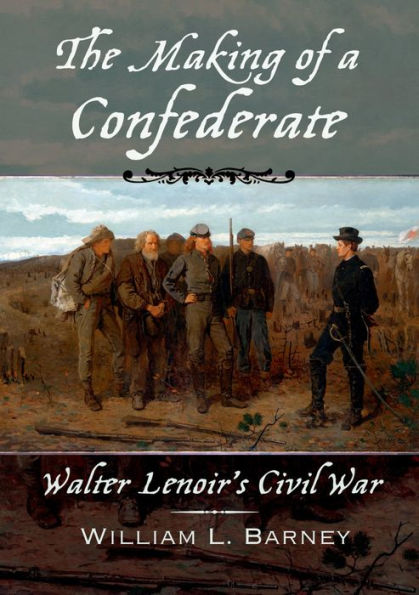The Making of a Confederate: Walter Lenoir's Civil War
Despite the advances of the civil rights movement, many white southerners cling to the faded glory of a romanticized Confederate past. In The Making of a Confederate, William L. Barney focuses on the life of one man, Walter Lenoir of North Carolina, to examine the origins of southern white identity alongside its myriad ambiguities and complexities. Born into a wealthy slaveholding family, Lenoir abhorred the institution, opposed secession, and planned to leave his family to move to Minnesota, in the free North. But when the war erupted in 1860, Lenoir found another escape route--he joined the Confederate army, an experience that would radically transform his ideals. After the war, Lenoir, like many others, embraced the cult of the Lost Cause, refashioning his memory and beliefs in an attempt to make sense of the war, its causes, and its consequences. While some Southerners sank into depression, aligned with the victors, or fiercely opposed the new order, Lenoir withdrew to his acreage in the North Carolina mountains. There, he pursued his own vision of the South's future, one that called for greater self-sufficiency and a more efficient use of the land. For Lenoir and many fellow Confederates, the war never really ended. As he tells this compelling story, Barney offers new insights into the ways that (selective) memory informs history; through Lenoir's life, readers learn how individual choices can transform abstract historical processes into concrete actions.
"1119385196"
The Making of a Confederate: Walter Lenoir's Civil War
Despite the advances of the civil rights movement, many white southerners cling to the faded glory of a romanticized Confederate past. In The Making of a Confederate, William L. Barney focuses on the life of one man, Walter Lenoir of North Carolina, to examine the origins of southern white identity alongside its myriad ambiguities and complexities. Born into a wealthy slaveholding family, Lenoir abhorred the institution, opposed secession, and planned to leave his family to move to Minnesota, in the free North. But when the war erupted in 1860, Lenoir found another escape route--he joined the Confederate army, an experience that would radically transform his ideals. After the war, Lenoir, like many others, embraced the cult of the Lost Cause, refashioning his memory and beliefs in an attempt to make sense of the war, its causes, and its consequences. While some Southerners sank into depression, aligned with the victors, or fiercely opposed the new order, Lenoir withdrew to his acreage in the North Carolina mountains. There, he pursued his own vision of the South's future, one that called for greater self-sufficiency and a more efficient use of the land. For Lenoir and many fellow Confederates, the war never really ended. As he tells this compelling story, Barney offers new insights into the ways that (selective) memory informs history; through Lenoir's life, readers learn how individual choices can transform abstract historical processes into concrete actions.
16.49
In Stock
5
1

The Making of a Confederate: Walter Lenoir's Civil War

The Making of a Confederate: Walter Lenoir's Civil War
16.49
In Stock

Product Details
| ISBN-13: | 9780199886180 |
|---|---|
| Publisher: | Oxford University Press |
| Publication date: | 11/14/2007 |
| Series: | New Narratives in American History |
| Sold by: | Barnes & Noble |
| Format: | eBook |
| File size: | 4 MB |
About the Author
From the B&N Reads Blog
